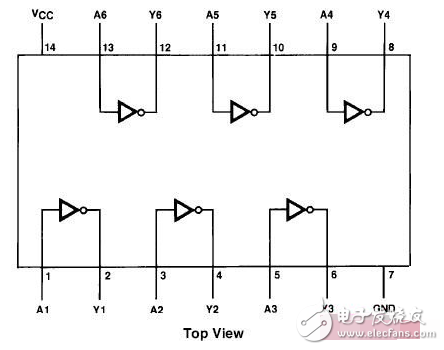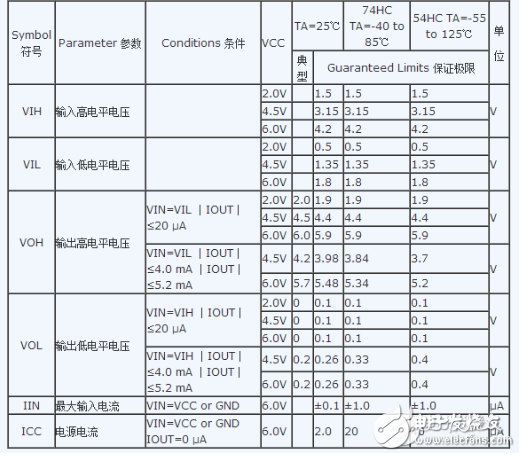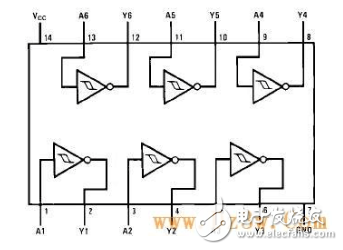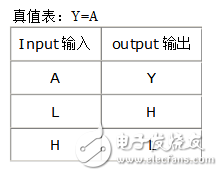Also with inverter function, do you know the specific difference between 74HC04 and 74HC14?
74HC04For 74HC04, it is well understood that the input is low and the output is high; the input is high and the output is low.

Recommended operating conditions:

The following figure is the input characteristic table of TI's 74HC04. For example, when the chip supply voltage Vcc=4.5V, the input terminal has a minimum input voltage of 3.15V to be recognized as high level by 74HC04; similarly, the input only has A voltage of no more than 1.35V can be recognized as low.

In TEST CONDITIONS, select IOH=-4mA and IOL=4mA respectively. For example, as above, when the chip supply voltage Vcc=4.5V, and the input is recognized as low level, the output end VOH is high level, and the minimum value is 3.84V; similarly, when the chip supply voltage Vcc=4.5V, and the input terminal is recognized as high level, the output terminal VOL is low level, and the maximum value is 0.33V. .
It can be seen from the above analysis that after the inversion of 74HC04, the high level or low level of several volts is mainly related to the power supply voltage of the chip!
The above analysis for the 74HC04 also applies to the 74HC14! Regarding the above data, they are exactly the same in the manual! That is, when it is used simply as an inverter, it can be used universally. But the 74HC14 is a Schmidt trigger in addition to the basic function of the inverter.
74HC14 pin diagram:

For the 74HC14,
When the input VI is greater than the threshold voltage VT+, the output VO changes from a high level to a low level;
When the input VI is less than the threshold voltage VT-, the output VO changes from a low level to a high level;
From the above analysis, we understand that Schmitt triggers are based on inverters and the basic concept of threshold voltage.
VOH and VOL have already been introduced above. Let's take a look at VT+ and VT-:
When the chip supply voltage Vcc=4.5V, the typical value of the forward threshold is VT+=2.5V, and the typical value of the negative threshold is VT-=1.6V. That is to say, when the input is greater than 2.5V, the output is low; when the input is less than 1.6V, the output is high. This range is wider than the 74HC04's output when the input is greater than 3.15V, and the output is high when the input is less than 1.35V (see the first figure). Level interference.
How does the Schmitt trigger 74HC14 overcome level interference than the inverter 74HC04?
Set the chip supply voltage Vcc=4.5V, the input voltage is greater than 3.15V before the T time, whether it is 74HC04 or 74HC14, the output is low; but when the input voltage fluctuates at time T, there is a rapid sag, this When the input voltage is less than 3.15V and greater than 2.5V, then the output of the 74HC04 will be uncertain, because its input is neither high nor low level, and the 74HC14 still considers the input high, so The output is low! At this point, you can see the profound skill of the 74HC14, right?
Therefore, the 74HC14 is often used to combat interference:
Connect the two Schmidt before starting. For example, when the chip supply voltage Vcc=4.5V, the input is 3V, the output is at least 3.84V, which is generally close to 4.5V. Even if the input fluctuates, as long as it is not less than 2.5V, the output will not change. This can counter the sudden interference of the input signal.
Photography Accessories,Camera Flash Diffuser,Lantern Softbox Diffuser,Photography Light Diffuser
SHAOXING SHANGYU FEIXIANG PHOTOGRAPHIC CO.,LTD , https://www.flying-photography.com